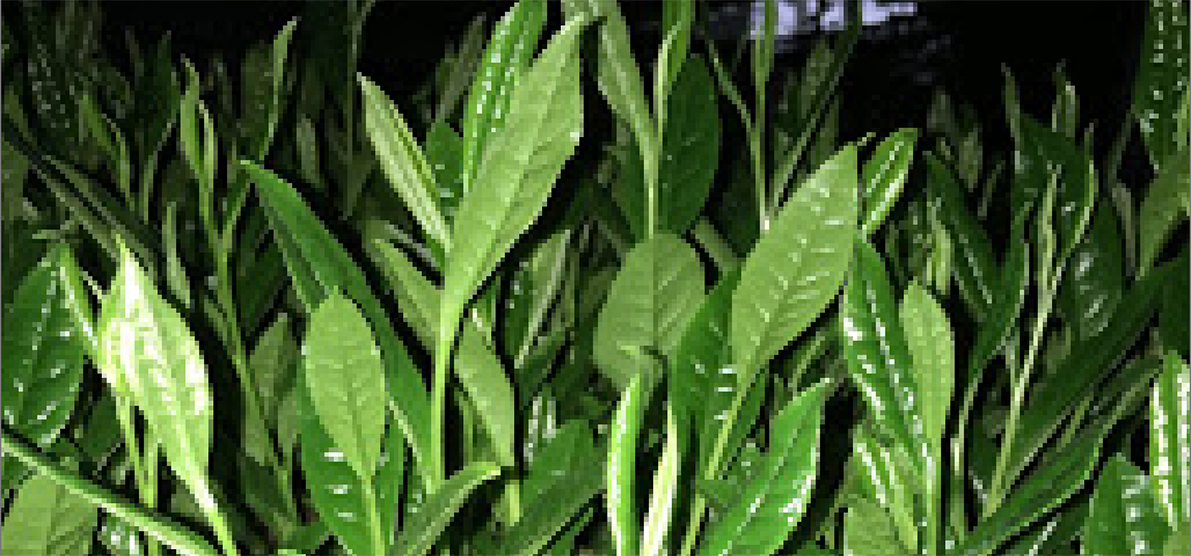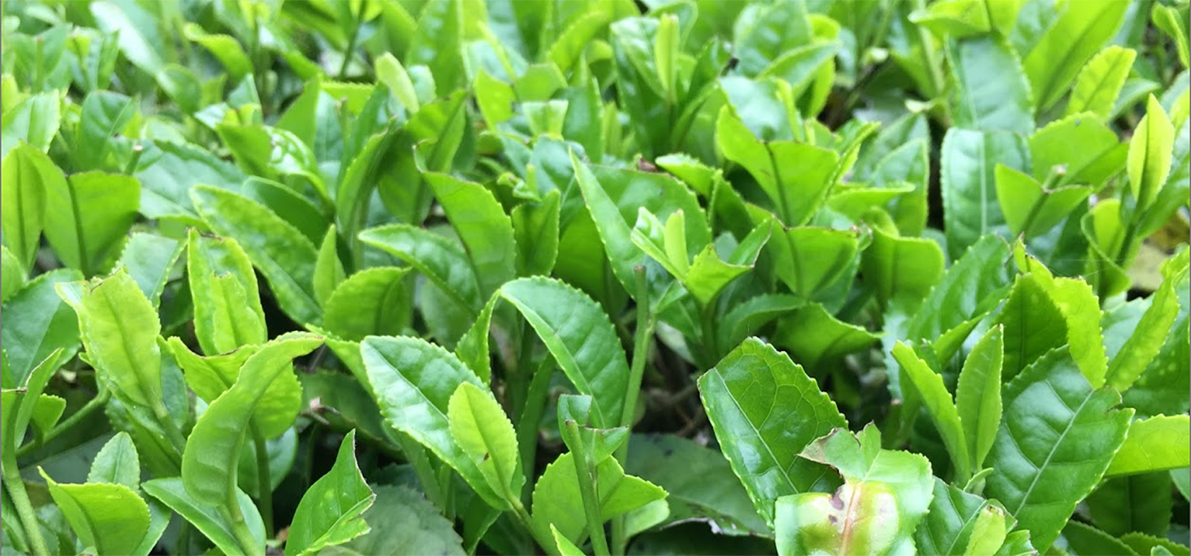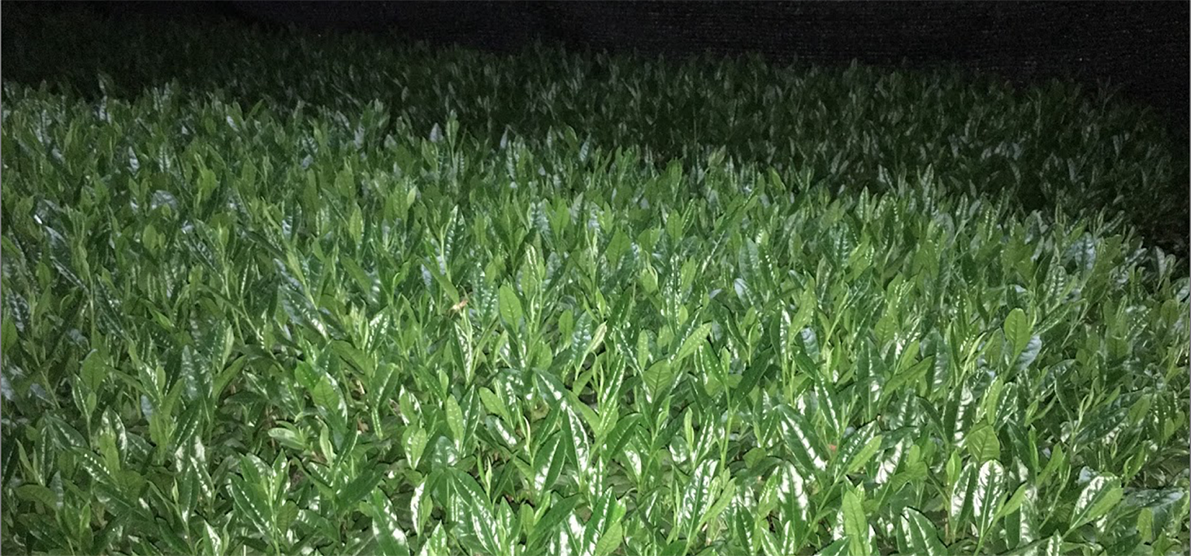Gyokuro
Authentic Process making Gyokuro
Before harvesting, the tea plants are shaded with black curtain for 30days more. With the increase of theanine and other amino acid, and less of catechin, the resulting tea has a fresh aroma, a rich in umami and the texture that is smooth and mellow. We are proud of making Gyokuro by the authentic process.
The effect of shading
When tea leaves are deprived of sunlight, several important chemical processes take place in the plant that brings the unique appearance and flavor of the Gyokuro. Since it is difficult for the leaves to perform photosynthesis when in the shade, plants overproduce chlorophyll molecules and amino acids to make up for it. Chlorophyll is what makes the leaves green and this is the reason why the Gyokuro has a deep green color.
-

Shading tree -

Un shading tree
The difference between Sencha, Kabusecha, Gyokuro and Matcha
There are three kinds of Japanese green tea, the Sencha, the Gyokuro, and the Matcha. They are not varieties of green tea plants, but different methods of cultivation and postproduction. The Kabusecha is covered with a black cloth before the harvest. Unlike the Gyokuro and the Tencha, the cloth covering for the Kabusecha lasts 7 to 14 days. The Gyokuro and the Tencha are covered for way longer than that.
-

Matcha and Gyokuro -

Kabuse-cha(left) and Sencha(right)
Our Special Gyokuro
Our Gyokuro is made of 100% Pure Gyokuro leaves. With its high quality, Ryokucha is known as “Gyokuro”. It is known that the ratio of “Gyokuro” in national tea production is only 0.3 percent. Furthermore, the ratio of pesticide-free Gyokuro is smaller too. Matcha is 4.0%. Kabuse is 4.6%.Ryutsu Service’s Gyokuro are pesticide-free and Eurofin certified.

